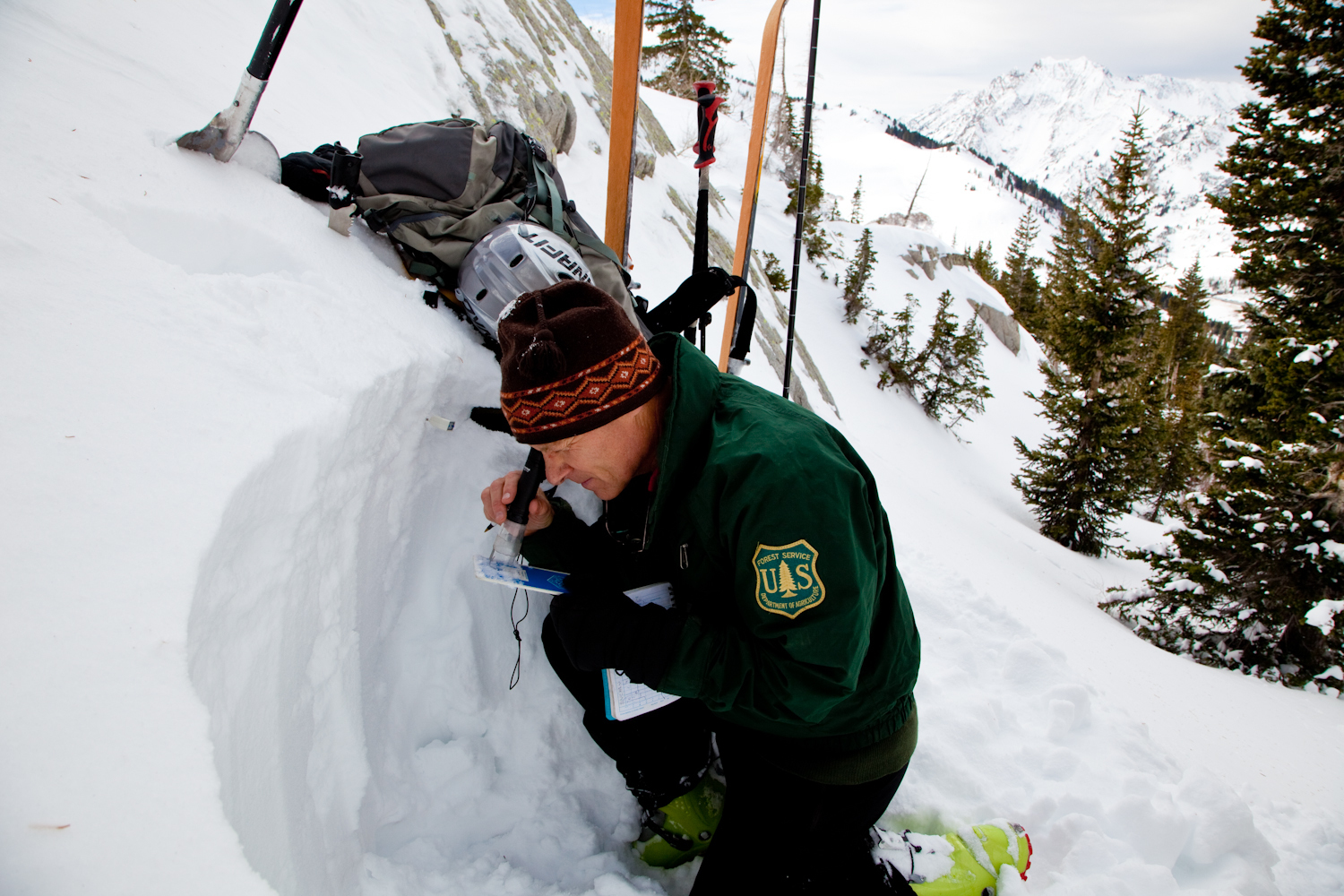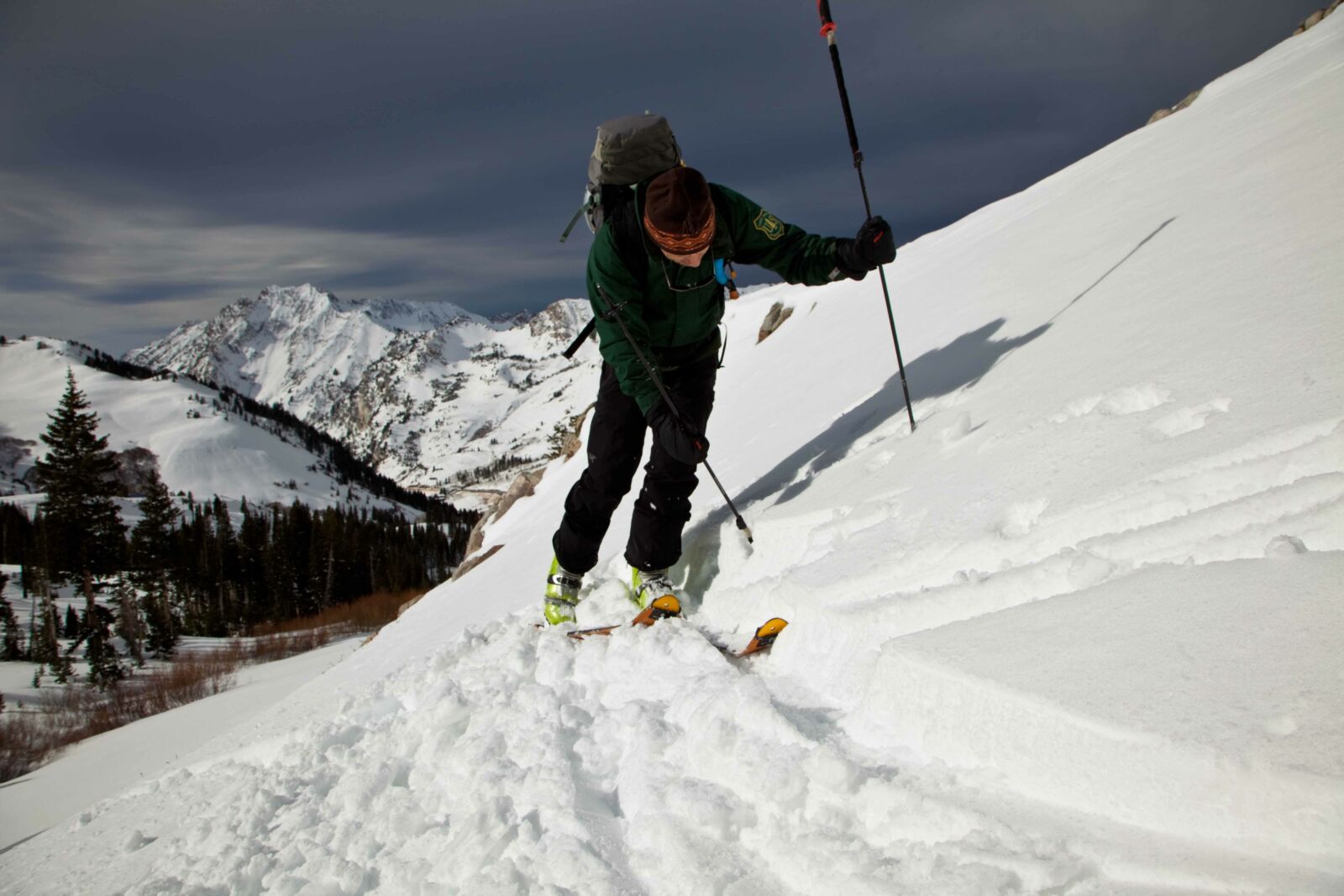Avalanches kill more people on National Forests than any other natural hazard. In a typical winter, the U.S. has about 30 avalanche-caused fatalities, nearly all on National Forests. It’s the job of the Forest Service’s National Avalanche Center and its affiliated backcountry avalanche centers to reduce these numbers, even as backcountry skiing, snowboarding, and snowmobiling use skyrockets. And it’s a challenge this small crew of dedicated avalanche experts do on an annual federal budget of roughly one million dollars.
This modest federal investment is doubled by funding from nonprofit “friends groups” that work with the 14 Forest Service backcountry avalanche centers around the country. For some perspective, the agency spent $967 million fighting forest fires in 2013.
Founded in 1999 and consisting of only two full-time positions, the Center’s mission includes overseeing 14 backcountry avalanche centers and the military artillery program that provides ski resorts with avalanche control technology they otherwise could not get. In addition, the Center provides expertise to field units, provides public and employee avalanche education, transfers new technologies to the field, facilitates avalanche research, and serves as a single point of contact for all things related to avalanches for the Forest Service.
Pre-dawn Howitzers
The National Avalanche Center builds on a long history of Forest Service avalanche expertise that began in the 1940s. Forest Service Snow Rangers were some of the agency’s first employees skilled in assessing and mitigating avalanches. They focused on the growing network of resorts that operated on National Forests, working with ski patrols and resort management to keep skiers safe. Over time, ski resorts developed their own expertise and assumed the majority of their avalanche mitigation.

Photo courtesy of Bruce Tremper
Investigating a snow pit.
By the late-1980s, the agency played more of an oversight role with ski areas, but maintained its responsibility in supplying ski resorts with the artillery needed to mitigate avalanches through carefully controlled explosions. This is still a critical component of the National Avalanche Center’s mission, which serves as the primary point of contact with the U.S. Army for the program. Military weapons provide a way to safely deliver explosives to remote starting zones, triggering controlled avalanches that reduce the danger on access roads and resort slopes.
In the predawn cold, well before skiers and riders get in line for the first chair of the day, Forest Service Snow Rangers work with highly trained ski patrollers to load artillery shells into frost covered howitzers and lob explosives onto snow-laden ski runs. The explosions send white clouds of snow down the slopes, effectively releasing an avalanche long before a skier might trigger it. Because of the requirements surrounding the safe handling, use, and disposal of these weapons, the Forest Service plays a crucial role in operating this program in conjunction with several ski resorts.
Backcountry Responsibilities
The Center’s most visible work is its backcountry avalanche program. Begun in the 1970s, this network has grown to 14 locations, mirroring the growth of backcountry activities.
Differences in wind, temperatures, snowfall amounts, and existing snowpacks can make for complicated forecasting. Some regional centers are small, and staff can only provide updates twice a week, while others post daily.
Backcountry skiing and snowboarding are some of the fastest growing sectors of the ski industry. Recent advances in snowmobile technology allow riders to get farther into the backcountry than ever before. These pressures underscore the importance of the backcountry centers’ work. As more and more people venture into the backcountry, the need for high-quality and accurate avalanche forecasting grows even more critical.
Dr. Karl Birkeland, the National Center’s Director explains: “We work in all National Forest Regions except Region 8 [the Southern Region]. We have our avalanche centers across the country, each with a director and one to three additional avalanche specialists. The centers broadcast avalanche advisories, host educational opportunities, and work with their local communities and friends groups to raise awareness about the dangers of avalanches.”
If you’re a backcountry aficionado, you’ve probably called your local avalanche hotline or visited its website for the current advisory. And you’re not alone; Birkeland estimates these advisories are accessed nearly six million times a year. The training sessions and lectures organized or sponsored by the backcountry centers reach tens of thousands of people annually.
Forecasting for avalanches in states from Alaska to New Hampshire is an immense challenge, making it all the more impressive that these centers accomplish what they do on a shoestring budget. Most advisories cover multiple mountain ranges that can stretch for a hundred miles or more. Differences in wind, temperatures, snowfall amounts, and existing snowpacks can make for complicated forecasting. Some regional centers are small, and staff can only provide updates twice a week, while others post daily.

Photo courtesy of Bruce Tremper
Birkeland explains the strong relationships between the backcountry centers, the public, and the ski resorts operating nearby: “The National Avalanche Program and its backcountry centers function as clearinghouses for snow and avalanche data. Our staff work with ski patrollers at nearby resorts, backcountry guides, volunteers, and backcountry users to provide the public with the most accurate and comprehensive information possible.”
The grassroots friends groups host fundraisers, organize and co-sponsor education efforts, and share real-world information from backcountry users to help keep other backcountry users safe.
No amount of forecasting can obviate personal responsibility, which includes being properly educated about risk and conducting one’s own assessments while venturing into the backcountry. However, the backcountry advisories provide an essential tool for mitigating the inherent dangers of playing in the mountains in the winter. Add that to the role the National Avalanche Center plays in ensuring that ski resorts have safe access to the artillery they need for reducing avalanche risk and you truly have a top-notch program for a bargain price.

